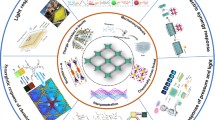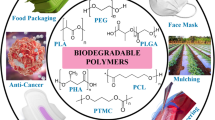Abstract
Polyamic acid (PAA) has been widely synthesized as the precursor of polyimide for over 50 years. PAA has had recent attention when used as a final polymer in a variety of applications including sensors, flexible electronics, drug delivery and food packaging. In all cases, structural modifications are sought to advance usability of PAA polymers, where chemistry of the polymers plays a key role for further modifications. However, there is a gap in literature that would discuss structural and cis-/trans-isometric characterizations of the PAA polymers. In this study, common PAA polymers synthesized from the couples of (1) pyromellitic dianhydride and 4,4′-oxydianiline, (2) pyromellitic dianhydride-4-sulfonyldianiline, (3) 4,4′-carbonyldiphtalic dianhydride and 4,4′-oxydianiline and (4) pyromellitic dianhydride and 4,4′-ethylenedianiline were characterized with 1D and 2D NMR and supported with ATR-FTIR techniques. The findings revealed that both diamine and dianhydride sources along with the solvent choice are crucial for cis-/trans-binding of diamine to dianhydride monomers, average molecular weight and intramolecular interactions. The current study, to the best of our knowledge, is the first report on structural annotation of common PAA polymers along with the effect of the solvent on the isomers and average molecular weight.







Similar content being viewed by others
References
Padavan DT, Wan WK (2010) Synthesis and characterization of a novel versatile poly (amic acid) derived from ethylenediaminetetraacetic dianhydride. Mater Chem Phys 124:427–433. https://doi.org/10.1016/j.matchemphys.2010.06.061
Maiga M, Yazgan I, Kariuki VM et al (2018) Brilliant green sequestered poly(amic) acid film for dual-mode detection: fluorescence and electrochemical enzymatic biosensor. Sens Actuators B Chem. https://doi.org/10.1016/j.snb.2017.10.002
Patil YS, Salunkhe PH, Mahindrakar JN et al (2018) Synthesis and characterization of aromatic polyimides containing synthesis and characterization of aromatic polyimides containing tetraphenylfuran-thiazole moiety. J Therm Anal Calorim. https://doi.org/10.1007/s10973-018-7567-2
Terraza CA, Tagle LH, Santiago-garcía JL et al (2018) Synthesis and properties of new aromatic polyimides containing spirocyclic structures. Polymer (Guildf) 137:283–292. https://doi.org/10.1016/j.polymer.2018.01.013
Hsu SL, Wang U, King J, Jeng J (2003) Photosensitive poly (amic acid)/organoclay nanocomposites. Polymer (Guildf) 44:5533–5540. https://doi.org/10.1016/S0032-3861(03)00626-8
Yao J, Pantano MF, Pugno NM, Bastiaansen CWM (2015) High-performance electrospun co-polyimide nanofibers. Polymer (Guildf) 76:105–112. https://doi.org/10.1016/j.polymer.2015.08.053
Cao Z, Zhao X, Wang D et al (2017) Polymerization of poly- (amic acid) ammonium salt in aqueous solution and its use in fl exible printed circuit boards. Eur Polym J 96:393–402. https://doi.org/10.1016/j.eurpolymj.2017.09.023
Yazgan I (2016) Novel poly(amic) acid membrane chemistries with experimentally-controlled pore size, transport, and disinfection properties. State University of New York at Binghamton
Noah NM, Omole M, Stern S et al (2012) Conducting polyamic acid membranes for sensing and site-directed immobilization of proteins. Anal Biochem 428:54–63. https://doi.org/10.1016/j.ab.2012.06.008
Yazgan I, Du N, Congdon R et al (2014) Biofunctionalized poly (amic) acid membranes for absolute disinfection of drinking water. J Memb Sci 472:261–271. https://doi.org/10.1016/j.memsci.2014.07.048
Zhang J, Yazgan I, Kariuki VM, Sadik OA (2017) Poly(amic) acid improves the efficiency and stability of PtCr nanoparticle catalyst during ethanol oxidation reaction. J Electrochem Soc 164:701–706. https://doi.org/10.1149/2.0211712jes
Kariuki VM, Hoffmeier JC, Yazgan I, Sadik OA (2017) Seedless synthesis and SERS characterization of multi-branched gold nanoflowers using water soluble polymers. Nanoscale. https://doi.org/10.1039/c7nr01233k
Metz S, Bertsch A, Bertrand D, Renaud P (2004) Flexible polyimide probes with microelectrodes and embedded microfluidic channels for simultaneous drug delivery and multi-channel monitoring of bioelectric activity. Biosens Bioelectron 19:1309–1318. https://doi.org/10.1016/j.bios.2003.11.021
Hsiao PF, Anbazhagan R, Hsiao-Ying C et al (2017) Thermoresponsive polyamic acid-conjugated gold nanocarrier for enhanced light-triggered 5-fluorouracil release. RSC Adv 7:8357–8365. https://doi.org/10.1039/c6ra27563j
Van Vlierberghe S, Sirova M, Rossmann P et al (2010) Surface modification of polyimide sheets for regenerative medicine applications. Biomacromol 11:2731–2739
Chao D, Wang S, Yang R et al (2013) Synthesis and properties of multifunctional poly (amic acid) with oligoaniline and fluorene groups. Colloid Polym Sci 291:2631–2637. https://doi.org/10.1007/s00396-013-3012-z
Padavan DT, Hamilton AM, Millon LE et al (2011) Synthesis, characterization and in vitro cell compatibility study of a poly(amic acid) graft/cross-linked poly (vinyl alcohol) hydrogel. Acta Biomater 7:258–267. https://doi.org/10.1016/j.actbio.2010.07.038
Yan Y, Jia X, Feng M et al (2017) Synthesis and electrochemical characterization of polyamic acid containing oligoaniline and triphenylamine. J Polym Sci Part A Polym Chem 55:1669–1673. https://doi.org/10.1002/pola.28545
Yang J, Lee M (2004) A water-soluble polyimide precursor: synthesis and characterization of poly (amic acid) Salt. Macromol Res 12:263–268
Cai D, Su J, Huang M et al (2011) Synthesis, characterization and hydrolytic stability of poly (amic acid) ammonium salt. Polym Degrad Stab 96:2174–2180. https://doi.org/10.1016/j.polymdegradstab.2011.09.008
Colonna M, Berti C, Binassi E et al (2011) Poly(1,4-cyclohexylenedimethylene-1, 4-cyclohexanedicarboxylate): analysis of parameters affecting polymerization and cis-trans isomerization. Polym Int 60:1607–1613. https://doi.org/10.1002/pi.3128
Laue A, Uhlig D, Fiedler B et al (2018) Mechanistic aspects on molecular structure formation of polymeric networks from diisocyanates with amidine compounds. J Polym Sci Part A Polym Chem 56:977–985. https://doi.org/10.1002/pola.28975
Morales-saavedra OG, Rivera E (2006) Linear and nonlinear optical properties of trans- and cis -poly (1-ethynylpyrene) based sonogel hybrid materials. Polymer (Guildf) 47:5330–5337. https://doi.org/10.1016/j.polymer.2006.05.042
Kumar A, Tateyama S, Yasaki K et al (2016) 1H NMR and FT-IR dataset based structural investigation of poly (amic acid) s and polyimides. Data Br 7:123–128. https://doi.org/10.1016/j.dib.2016.02.006
Han M, Nikles DE (2001) Amine-quinone polyimides. J Polym Sci Part A Polym Chem 39:4044–4049. https://doi.org/10.1002/pola.10027
Kariuki VM, Panetier JA, Schulte J, Sadik OA (2016) Directional templating mechanisms of anisotropic nanoparticles using poly(pyromellitic dianhydride-p-phenylenediamine). J Phys Chem C 120:21027–21036. https://doi.org/10.1021/acs.jpcc.6b03369
Li W, Chung H, Daeffler C et al (2012) Application of 1H DOSY for facile measurement of polymer molecular weights. Macromolecules 45:9595–9603. https://doi.org/10.1021/ma301666x
Acknowledgements
We acknowledge internal funds of Kastamonu University, the fund number is KÜ-BAP01/2018-33. Thanks to Dr. Abdurrahman Gümüş (İzmir Institute of Technology) for his help to perform NMR studies and Ersin Kanberli (Kastamonu University) for his help to perform ATR-FTIR studies.
Author information
Authors and Affiliations
Corresponding author
Ethics declarations
Conflict of interest
The author declares no competing interests.
Additional information
Publisher's Note
Springer Nature remains neutral with regard to jurisdictional claims in published maps and institutional affiliations.
Electronic supplementary material
Below is the link to the electronic supplementary material.
Rights and permissions
About this article
Cite this article
Yazgan, İ. NMR-based structural characterization of common aromatic poly(amic acid) polymers. Polym. Bull. 77, 1191–1203 (2020). https://doi.org/10.1007/s00289-019-02793-0
Received:
Revised:
Accepted:
Published:
Issue Date:
DOI: https://doi.org/10.1007/s00289-019-02793-0




